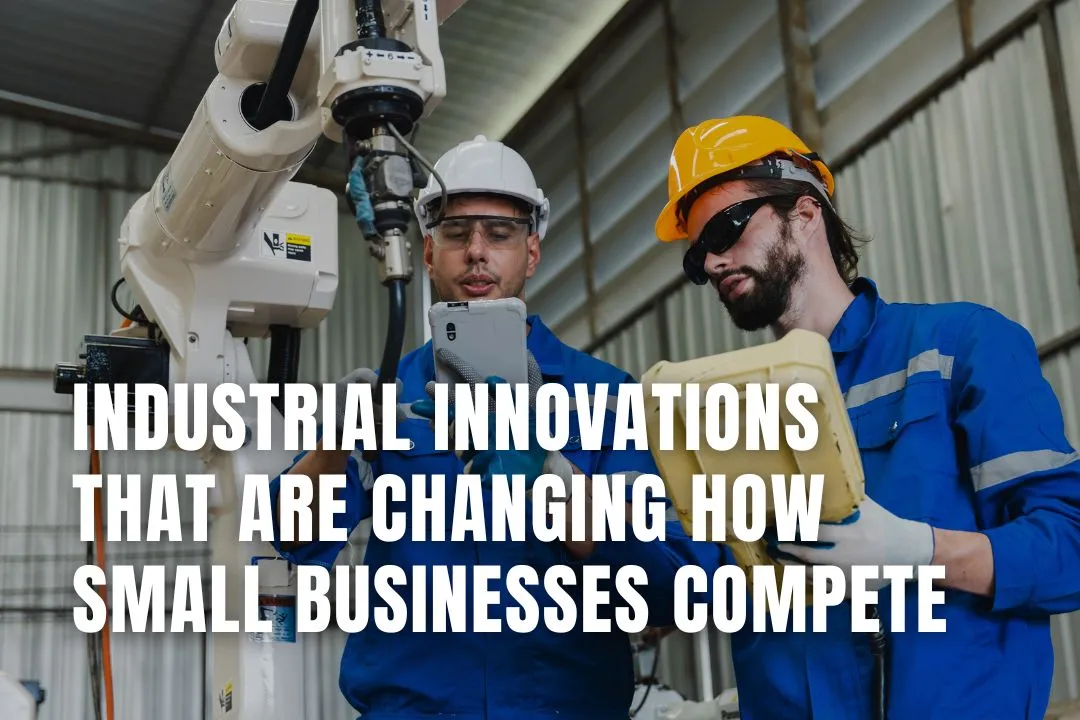
Industrial innovation used to be a luxury only big business could afford. The high cost of purchase, lengthy training periods, and complex system reserved it for big businesses. However, things are on the move.
Today, technology is no longer reserved for the big players. Affordable tools and smarter systems are helping small businesses improve efficiency, reduce errors, and take on more complex work.
In this blog, we’ll walk through some key industrial innovations that are helping small companies hold their ground, and in many cases, lead the way.
Automation used to be a major investment. Robotic arms, advanced conveyor systems, or even just automated packaging were out of budget for most small manufacturers. But the gap is closing.
Now, we’re seeing a rise in compact, low-maintenance automation tools. These are the barcode scanners used to track inventory, programmable label applicators, and compact robotic systems that execute repetitive jobs. The actual benefit? Time. Automation minimises human error and allows teams to concentrate on skilled jobs instead of repetitive, manual labour.
Some examples of low-cost automation used in small businesses are:
Small companies don't need a warehouse of robots to compete. Even a few strategic updates on automation can make operations smoother and consistent across the board.
Mass production isn’t always the goal for small companies. Many focus on custom orders, prototypes, or limited batches. That’s where precision tools come into play.
One tool making a strong impact in this space is the Water Jet Cutter. It’s designed to cut through materials like metal, glass, rubber, and composites with high accuracy, and without using heat. This means there’s no risk of heat distortion, which keeps the material’s original properties intact. For small manufacturing units or workshops that handle prototypes, client-specific orders, or high-precision parts, a cutter offers both speed and control, without needing large-scale infrastructure.
There are also several platforms and manufacturers that provide helpful resources to understand the different types of cutters available. These platforms offer in-depth comparisons, explain key features, and help you choose a machine that fits your scale and budget. Having access to the right tools and the right guidance can make a long-term difference in how efficiently you operate.
3D printing has moved well beyond hobby use. It’s now a standard part of product development for many small-scale manufacturers and design firms. And it’s easy to see why.
For starters, 3D printers can produce working prototypes in hours rather than days. They also reduce material waste by only using what's necessary to build the part. Most importantly, 3D printing allows for rapid changes. If a design needs to be updated, the next print can reflect those changes immediately, without waiting for a supplier or mould change.
Even businesses without in-house printers can take advantage of local or online 3D printing services. This makes it easier to validate new ideas quickly before moving to large-scale production.
Managing inventory, orders, and production schedules doesn’t need to rely on paper logs or spreadsheets anymore. Cloud-based tools are giving small business owners real-time control over their operations, even across multiple locations.
Here’s how cloud-based tools are making a difference:
These systems improve transparency and reduce costly delays caused by miscommunication or missing materials. They also help small teams act fast, spot bottlenecks early, and make decisions based on current data rather than guesswork.
Artificial intelligence might sound complex, but it’s becoming more common in business tools made for small teams. Predictive analytics can now help businesses plan ahead using real data.
For example, small retailers can use simple forecasting tools to predict which products are likely to sell next month. Service providers can spot seasonal trends in customer behaviour. Manufacturers can use analytics to anticipate material shortages or equipment issues before they interrupt operations.
It’s about having access to patterns and signals in the data. These tools are helping small businesses make more confident decisions while reducing the risks that come with poor timing or limited visibility.
Small businesses no longer need to fall behind just because of limited resources. Industrial innovation is becoming more flexible, more affordable, and more accessible than ever before.
If you’re running a product-based business or managing production on a tight budget, even a small upgrade can make a noticeable difference. The playing field may not be completely level yet, but it’s closer than it’s ever been.
Industrial innovations are now more accessible due to the development of affordable, compact tools and smarter systems, which reduce the high costs, lengthy training, and complex infrastructure previously required.
Small businesses can utilise barcode-based inventory systems, automated label printers, compact robotic arms for repetitive tasks, and software for shift, order, and delivery management, as well as workflow automation triggers.
3D printing allows small-scale manufacturers to produce working prototypes rapidly, reduce material waste by using only necessary material, and quickly implement design changes without waiting for external suppliers or mould alterations.
Cloud-based tools provide real-time inventory tracking, shared dashboards for team updates, efficient order management, centralised document sharing, and remote access, improving transparency and reducing costly delays.
Predictive technology, often powered by AI, helps small businesses plan ahead by forecasting sales, identifying seasonal customer trends, and anticipating material shortages or equipment issues, enabling more confident, data-driven decisions.